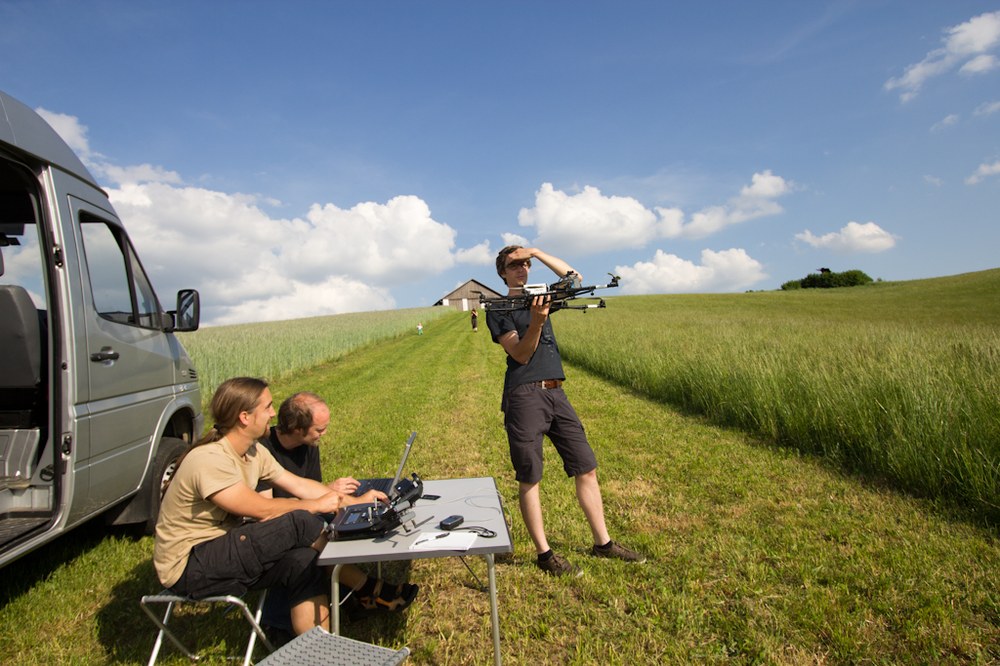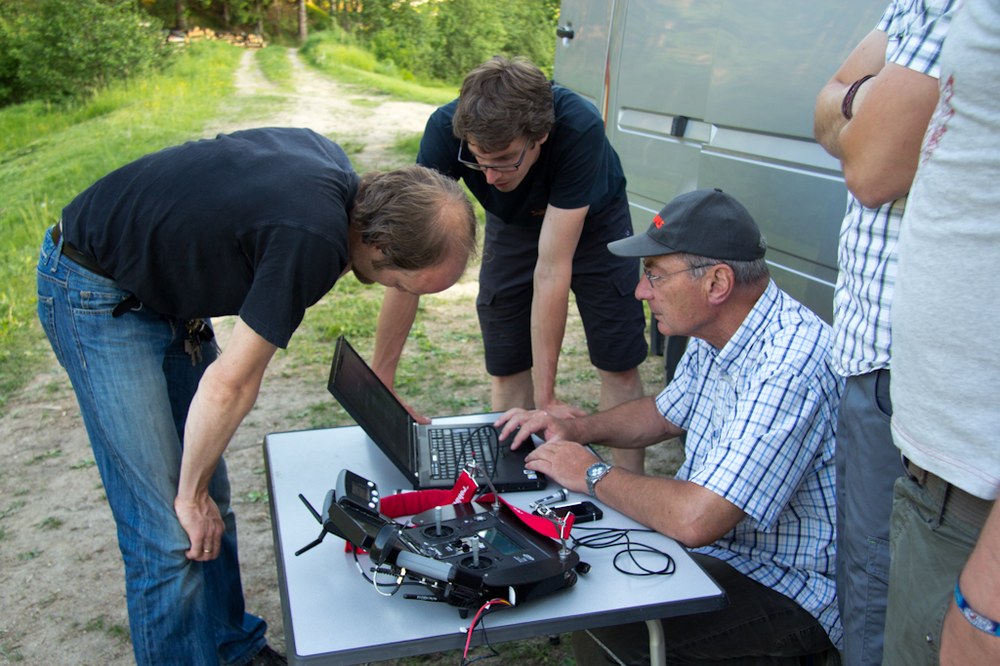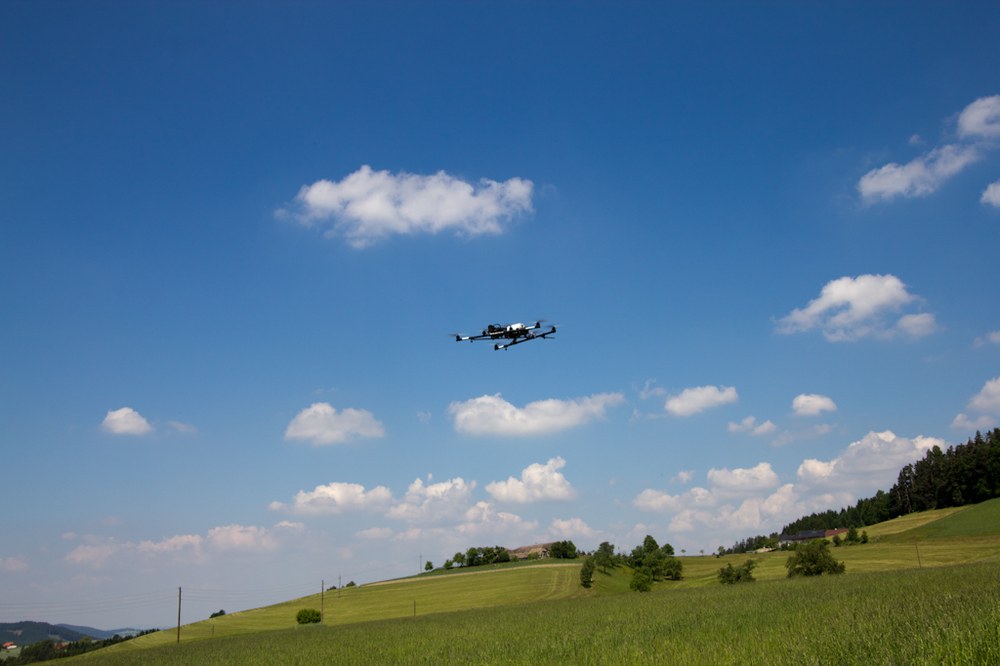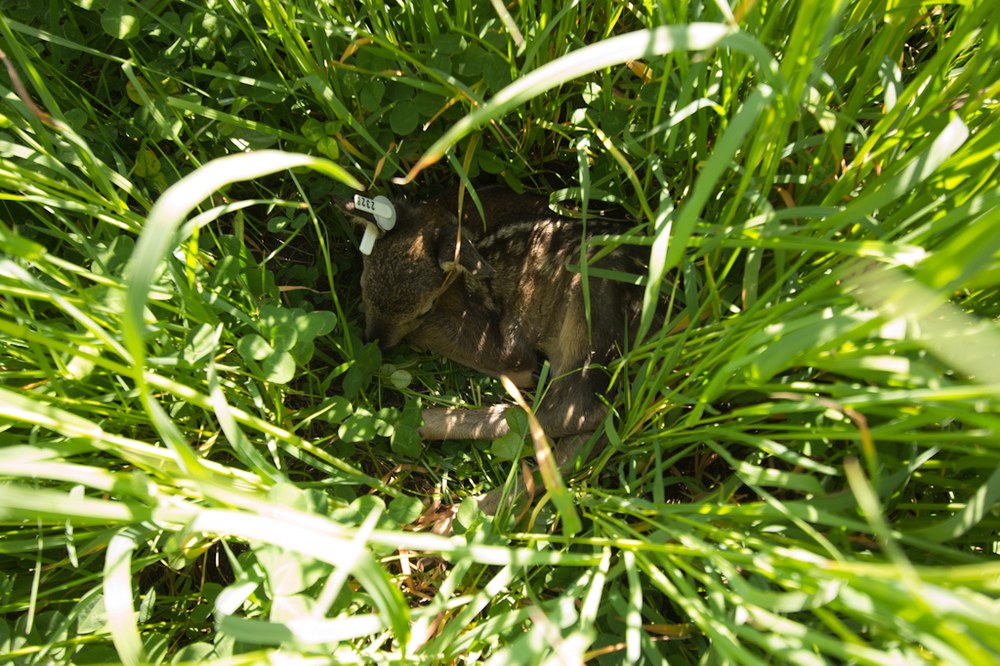Air Rescue for Fawns



For many years DLR‘s Remote Sensing Technology Institute (IMF) has been developing and testing methodologies and systems for locating fawns in their natural environment. These young animals are particularly endangered when meadows are mown in early summer. Since they lie motionless in the meadow whenever danger threatens many of them are consequently killed by mowers. In May/June 2011 IMF staff tested a wildlife rescue system which detects these animals from the vantage point of a flying platform.
Previous developments focused on equipment that is either carried by hand or mounted on a mower for use before or during mowing. The rapid technological progress of recent years in the area of small, unmanned aerial vehicles has also made these aircraft attractive as a platform for wildlife rescue systems. IMF is testing a so-called octocopter, a rotary wing aircraft with eight rotors which can carry a payload weighing up to 0.5 kg on remotely controlled flights lasting about 16 minutes. During this time the wildlife finder can search an area of about 4 ha (equivalent to eight soccer fields) from an altitude of 50 m. It is equipped with infrared and video cameras whose images are transmitted to a ground station in real time. Initial trials with the octocopter have confirmed the basic feasibility of the system: during testing in various regions of Bavaria and Austria it detected 16 fawns. Media interest in this work was correspondingly high (see list of links).

